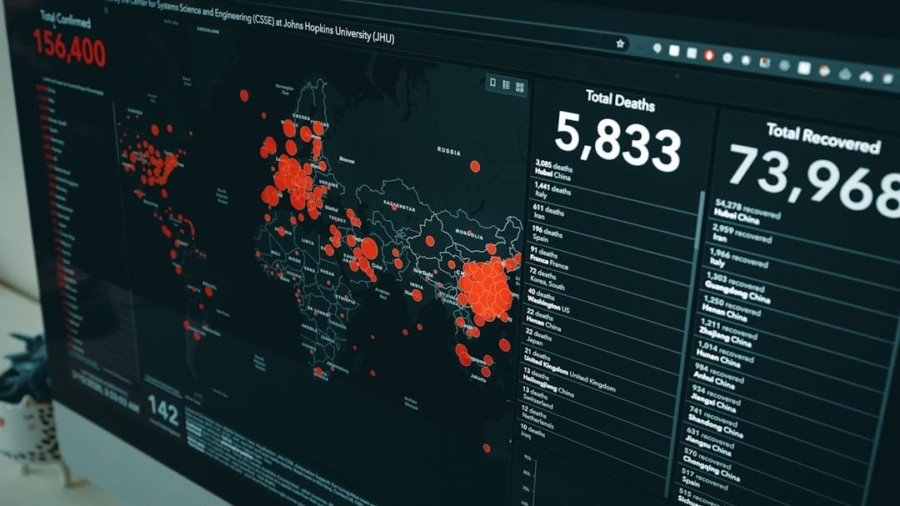In an era marked by increasing frequency and intensity of natural disasters, the need for effective disaster resilience strategies has never been more pressing. Predictive models have emerged as vital tools in this domain, enabling governments, organizations, and communities to anticipate potential disasters and mitigate their impacts. These models leverage historical data, environmental variables, and advanced algorithms to forecast the likelihood of various disaster scenarios, ranging from floods and hurricanes to wildfires and earthquakes.
By providing insights into when and where disasters may occur, predictive models empower stakeholders to make informed decisions regarding resource allocation, emergency preparedness, and risk management. The integration of predictive modeling into disaster resilience strategies represents a paradigm shift in how societies approach disaster risk reduction. Traditionally, responses to disasters were reactive, often resulting in significant loss of life and property.
However, with the advent of sophisticated predictive analytics, it is now possible to adopt a proactive stance. This shift not only enhances the efficiency of response efforts but also fosters a culture of preparedness within communities. As we delve deeper into the intricacies of predictive models, it becomes evident that their development and implementation are multifaceted processes that require a robust understanding of data, technology, and human behavior.
Key Takeaways
- Predictive models play a crucial role in disaster resilience by helping to anticipate and prepare for potential disasters.
- Data plays a key role in developing predictive models for disaster resilience, providing valuable insights and patterns for analysis.
- Examples of predictive models in disaster resilience include flood forecasting, earthquake early warning systems, and wildfire risk assessment.
- Challenges and limitations of predictive models in disaster resilience include data accuracy, model complexity, and the need for continuous updates.
- Integrating predictive models into disaster preparedness and response plans can improve decision-making and resource allocation during emergencies.
The Role of Data in Developing Predictive Models
Data serves as the backbone of predictive modeling in disaster resilience. The accuracy and reliability of these models hinge on the quality and comprehensiveness of the data utilized. Various types of data are essential for developing effective predictive models, including historical disaster records, meteorological data, geographical information systems (GIS), and socio-economic indicators.
For instance, historical data on past flooding events can reveal patterns related to rainfall intensity, river levels, and land use changes over time. By analyzing these patterns, researchers can develop models that predict future flooding events with greater precision. Moreover, the advent of big data has revolutionized the landscape of predictive modeling.
With the proliferation of sensors, satellite imagery, and social media platforms, vast amounts of real-time data are now available for analysis. This influx of information allows for more dynamic modeling approaches that can adapt to changing conditions. For example, during a hurricane event, real-time data on wind speeds and storm surges can be integrated into predictive models to provide updated forecasts that inform evacuation orders and resource distribution.
However, harnessing this data effectively requires sophisticated analytical tools and methodologies, as well as collaboration among various stakeholders to ensure that data is shared and utilized optimally.
Examples of Predictive Models in Disaster Resilience

Numerous examples illustrate the successful application of predictive models in enhancing disaster resilience across different contexts. One notable instance is the use of predictive modeling in flood risk management. The National Oceanic and Atmospheric Administration (NOAA) employs hydrological models that simulate river flow and rainfall patterns to predict flood events in real-time.
These models have been instrumental in issuing timely flood warnings, allowing communities to prepare and respond effectively. For example, during Hurricane Harvey in 2017, NOAA’s predictive models provided critical information that helped emergency responders allocate resources and implement evacuation plans. Another compelling example can be found in wildfire management.
The U.S. Forest Service utilizes predictive modeling tools such as the Wildfire Decision Support System (WDSS) to assess fire risk based on factors like vegetation type, weather conditions, and topography. By analyzing these variables, the WDSS can forecast potential fire spread and intensity, enabling fire management teams to prioritize areas for controlled burns or preemptive evacuations.
In 2020, during the California wildfires, these predictive models played a crucial role in guiding firefighting efforts and minimizing damage to communities.
Challenges and Limitations of Predictive Models
Despite their potential benefits, predictive models in disaster resilience face several challenges and limitations that can hinder their effectiveness. One significant challenge is the inherent uncertainty associated with predicting complex natural phenomena. Disasters are influenced by a multitude of variables that can change rapidly, making it difficult to create models that accurately capture all relevant factors.
For instance, while meteorological data can provide insights into storm patterns, unforeseen changes in atmospheric conditions can lead to unexpected outcomes that models may not account for. Additionally, the reliance on historical data poses limitations for predictive modeling. Many regions lack comprehensive historical records of disasters, particularly in developing countries where data collection infrastructure may be inadequate.
This scarcity of data can lead to models that are less reliable or applicable in certain contexts. Furthermore, biases in historical data can perpetuate inequalities in disaster preparedness efforts. For example, if a model is trained primarily on data from affluent areas, it may not accurately predict risks faced by marginalized communities that experience different vulnerabilities.
Integrating Predictive Models into Disaster Preparedness and Response Plans
The successful integration of predictive models into disaster preparedness and response plans is crucial for maximizing their impact on community resilience. This process involves not only the technical aspects of model development but also the engagement of stakeholders at all levels. Policymakers must work closely with scientists and data analysts to ensure that predictive models are tailored to local contexts and needs.
This collaboration can facilitate the development of user-friendly tools that enable emergency managers to interpret model outputs effectively. Moreover, training programs for first responders and community leaders are essential for fostering a culture of preparedness based on predictive insights. For instance, simulations and drills can be conducted using model predictions to test response strategies under various disaster scenarios.
By incorporating predictive modeling into training exercises, communities can enhance their readiness for real-world events. Additionally, public awareness campaigns can educate residents about the importance of these models and encourage them to engage in preparedness activities based on model forecasts.
The Importance of Continuous Monitoring and Updating of Predictive Models

The dynamic nature of environmental conditions necessitates continuous monitoring and updating of predictive models to maintain their relevance and accuracy. As new data becomes available—whether through advancements in technology or changes in land use—models must be recalibrated to reflect these developments. For example, urbanization can significantly alter flood risk profiles; thus, incorporating updated land use data into flood prediction models is essential for ensuring their effectiveness.
Furthermore, feedback loops between model outputs and real-world outcomes are critical for refining predictive capabilities. After a disaster event occurs, analyzing the performance of predictive models can provide valuable insights into their strengths and weaknesses. This iterative process allows researchers to identify areas for improvement and enhance model accuracy over time.
Continuous engagement with local communities also plays a vital role in this process; local knowledge can inform model adjustments that account for unique regional characteristics or emerging risks.
Collaborative Efforts in Utilizing Predictive Models for Disaster Resilience
Collaboration among various stakeholders is fundamental to maximizing the effectiveness of predictive models in disaster resilience efforts. Governments at local, regional, and national levels must work together with academic institutions, non-governmental organizations (NGOs), and private sector entities to create a cohesive approach to disaster risk reduction. Such partnerships can facilitate data sharing and resource pooling, enabling more comprehensive modeling efforts.
International collaboration is equally important in addressing transboundary disaster risks. For instance, countries prone to similar hazards—such as typhoons or earthquakes—can share best practices and lessons learned from their respective predictive modeling initiatives.
Future Trends and Innovations in Predictive Modeling for Disaster Resilience
As technology continues to evolve, so too do the possibilities for enhancing predictive modeling in disaster resilience. One promising trend is the integration of artificial intelligence (AI) and machine learning algorithms into predictive models. These advanced techniques can analyze vast datasets more efficiently than traditional methods, uncovering complex patterns that may not be immediately apparent.
For example, AI-driven models can improve predictions related to earthquake occurrences by analyzing seismic activity alongside geological features. Additionally, the rise of citizen science initiatives presents an opportunity for more inclusive data collection processes. Engaging local communities in gathering real-time observations—such as reporting flooding conditions or wildfire smoke—can enrich datasets used for predictive modeling.
This grassroots approach not only enhances model accuracy but also empowers communities by involving them directly in disaster resilience efforts. Furthermore, advancements in remote sensing technologies are set to revolutionize how we monitor environmental changes relevant to disaster risk. Drones equipped with sensors can provide high-resolution imagery for assessing damage after a disaster or monitoring changes in land use over time.
By integrating these innovative technologies into predictive modeling frameworks, stakeholders can develop more robust strategies for anticipating and responding to disasters effectively. In conclusion, the landscape of predictive modeling for disaster resilience is rapidly evolving as new technologies emerge and collaborative efforts expand. By harnessing the power of data analytics and fostering partnerships across sectors, societies can enhance their preparedness for future disasters while building resilient communities capable of withstanding the challenges posed by an increasingly unpredictable world.
A related article discussing the top trends in e-commerce business can be found here. This article explores how businesses are adapting to the digital landscape and utilizing predictive models to enhance their disaster resilience. By staying informed on the latest e-commerce trends, companies can better prepare for potential disruptions and ensure continuity in the face of disasters.
FAQs
What are predictive models?
Predictive models are statistical or machine learning algorithms that use historical data to make predictions about future events or outcomes. These models can be used to forecast a wide range of phenomena, from weather patterns to stock market trends.
How do predictive models support disaster resilience?
Predictive models can support disaster resilience by helping to anticipate and prepare for potential disasters. By analyzing historical data and identifying patterns, these models can forecast the likelihood and impact of natural disasters such as hurricanes, earthquakes, and floods. This information can then be used to develop proactive strategies for disaster preparedness and response.
What types of data are used in predictive models for disaster resilience?
Predictive models for disaster resilience can utilize a variety of data sources, including historical records of natural disasters, environmental data such as temperature and precipitation, infrastructure data, and socioeconomic indicators. By combining and analyzing these different types of data, predictive models can provide a comprehensive understanding of the potential risks and impacts of disasters.
How accurate are predictive models in forecasting natural disasters?
The accuracy of predictive models in forecasting natural disasters can vary depending on the specific type of disaster and the quality of the data used. While predictive models can provide valuable insights and early warnings, they are not infallible and there is always a degree of uncertainty in forecasting natural events. However, continuous improvements in data collection, modeling techniques, and computing power are helping to enhance the accuracy of predictive models for disaster resilience.
What are some examples of how predictive models have been used to support disaster resilience?
Predictive models have been used in various ways to support disaster resilience, such as predicting the path and intensity of hurricanes to facilitate evacuation planning, assessing the risk of flooding to inform land use and infrastructure development, and forecasting the likelihood of wildfires to guide resource allocation for firefighting efforts. These applications demonstrate the potential of predictive models to enhance preparedness and response to natural disasters.

